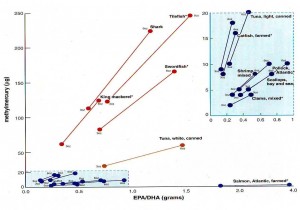A big issue for the health system in Australia is that no-one’s in charge. Not the Commonwealth, not the states, not the private health insurance funds. Most provision is private: general practitioners are increasingly employed by for-profit chains, and before that, small business people. They respond to incentives designed by the Commonwealth government.
http://theconversation.com/did-the-health-reform-process-fail-now-well-never-know-27921
Did the health reform process fail? Now we’ll never know

Yesterday was a sorry day in the long history of health reform in Australia. The Council of Australian Governments (COAG) Reform Council issued its five year score-keeper’s report on health reform progress. It will be the last such report, since the COAG Reform Council has been sacrificed on the altar of savings in the May budget, and we will no longer know how our governments are performing.
The COAG Reform Council paints some lipstick on the pig but overall reform results are poor in the health system. Compared to last year, Australians are waiting marginally longer for elective surgery, longer for community support in the home, and dramatically longer to get into residential aged care.
On the upside, we’re living slightly longer, having fewer heart attacks and the incidence of some cancers has reduced. The five-year trends for performance paint a similar picture to the year-on-year results.
It’s easy to conclude that the health reform process was a waste of time and money. But this is shortsighted. Many of the structural reforms focused on building the foundations of a health system that was on the verge of being able to deliver real improvements in patient care.
Slow road to reform
Kevin Rudd’s gab-fest of health reform talk in 2009 and early 2010 led to an alphabet soup of new health agencies, some investment in parts of the health system, more data in the public domain than we’ve ever seen but precious little in terms of real on-the-ground improvements.
But there were some important exceptions. The Rudd-appointed National Health and Hospitals Reform Commission identified a gap in availability of rehabilitation beds in the system. Without adequate rehabilitation care people were ending up in nursing homes when they could have been at home. Reform money helped to address that gap, although that funding was abruptly terminated in the 2014 budget.
Funding was also provided for better prevention programs and to reward improvements in waiting times where they occurred. Medicare Locals were created to provide a platform for improvements in primary care such as better after-hours services.
Running a health system is hard, improving it is even harder. But we have to improve every day just to stand still. The new treatments that are introduced every week put pressure on the health dollar. These new treatments, though, mean we’re living longer – so we get something for the extra money.
A big issue for the health system in Australia is that no-one’s in charge. Not the Commonwealth, not the states, not the private health insurance funds. Most provision is private: general practitioners are increasingly employed by for-profit chains, and before that, small business people. They respond to incentives designed by the Commonwealth government.
The pathology and radiology markets are also highly concentrated corporatised businesses. Around one-third of hospital beds are in private hospitals, and most of those are for-profit businesses as well.
Abolishing the foundations
The health reform process mainly concentrated on two aspects of the system: primary care and public hospitals. Primary care reform was mainly effected through the creation of Medicare Locals and GP Super Clinics.
Both were good ideas but flawed in implementation: some Super Clinics are still not open five years after the policy got underway. Medicare Locals were over-hyped by the previous government, wrapped up in red tape by the Commonwealth Health Department and as a result of the budget are being abolished and replaced by new organisations.
Public hospital reform had two elements. In most states it included increased local autonomy through introduction of local boards, and increased services with expanded rehab being the best example. At the national level it included a new alignment of Commonwealth and state interests in controlling hospital costs.
From June 1, 2014, the Commonwealth will meet 45% of the costs of increased hospital activity, but only up to an independently determined “efficient price”. This is a good reform, because could have ended the blame game between Commonwealth and states over money by locking the former into funding increased health state health spending. But these changes will be undone in 2017.
So come 2017, most evidence of health reform will have vanished. There will be some ongoing structures and services, but the big aspirations to address the big problems will have fizzled out.
The problems won’t go away, however. Innovation and system reform will still be required. If anyone is around to issue the next score-keeper’s report it will undoubtedly show worse performance, including longer waiting times, across the health system. There’ll then be more calls for reform and the whole cycle will start again, but with wasted years in the meantime.







